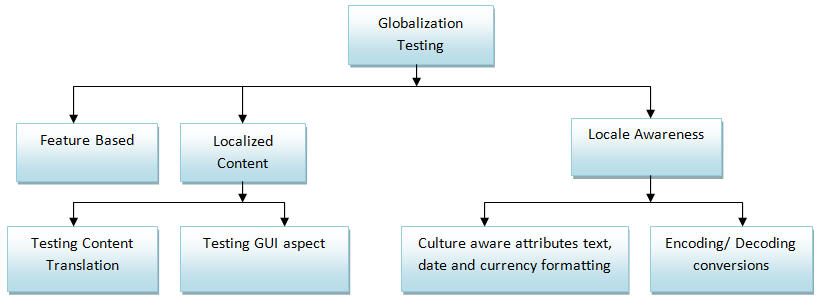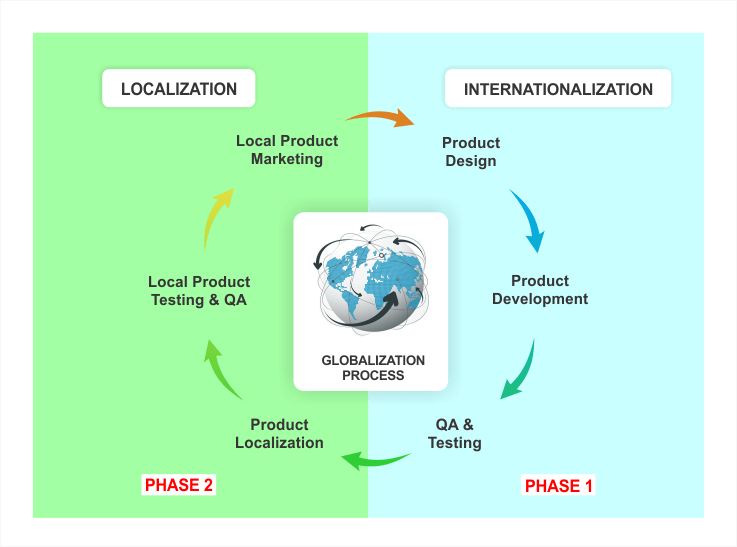In the present time, the world has become a global market and everyone wants to target this global market. Targeting global market means to go beyond the borders and barriers which restrict the usage of an application. To target this market, you need to be sure for your application that it can pass the global standards. It means that your application can support multiple platforms and languages for different regions.
The application’s functionality should be developed in such a way that it can support the content view and alignment as per the specific region. The acceptance of the application depends on the ease of use for the users which belongs to different regions. So to overcome these barriers, Globalization testing needs to be done just to ensure that the application has support for the users that belong to multiple locations.
Jump to Section
What is Globalization Testing?
It is a process of testing which we usually follow to check that an application is working properly in different locations and culture. In this level of testing, we validate that the application should be compatible with all the language inputs. Globalization testing ensures that the application is adaptive to all the language and culture in the world. This testing technique validates that the application is capable of using all over the world. It also ensures that the application can handle the text input in any language. The other name of this testing is G11N testing because of eleven alphabets present between G and N.

Globalized Application
As we are entering into the concept of globalization testing, it is also important to have an idea about the globalized application. If an application runs independently of its native environment then only we can say that it is a globalized application.
The biggest example of a globalized application is Facebook. This application has a language feature and you can use this application in any language. If you are from India then you have the options to use it in English, Hindi, Bangla, Punjabi etc. So, you can select the language according to your country and region and use this application in a better way. It is not about the language only, we also need to consider the time zone and currency format as per the respective region.
Key Benefits of Globalization Testing
- When an application is released globally, the expenses are relatively less as compared to the application released location wise.
- It provides better time management.
- It will make your application scalable and flexible.
- This will improve international visibility and acceptance of an application.
Why Globalization Testing?
As per the current scenario, the world becomes a global market. If you want to compete then your application must be perfect on the global standards which means that your application should work perfectly regardless of country, region, language etc.
For this, you can perform globalization testing just to make sure that your application’s functionality is working fine as per the global standards. Functionally perfect means that your application should fulfill all the global requirements like having multiple languages support, time zones etc. You can also ensure that the change in the geographic region and language will not affect your application’s functionality.
What Should be Tested?
- Language support for all the regions.
- The format of date and timezone.
- Currency format according to the different regions.
- The format of address and contact number.
- Zip code format.

Types of Globalization Testing
There are two types of Globalization Testing, the first one is Internationalization Testing, and the second one is Localization Testing.

Internationalization Testing
Internationalization Testing is basically a process for the verification of the functionality of the application across the globe. The major role of this testing is to check that the code can handle all the request made by the users from different regions in different languages. It is useful in verifying that the application’s functionality is not breaking at any point which results in data loss or data integrity problem. The general term for this testing is I18N testing because there are 18 alphabets between I and N.

Internationalization testing mainly focuses on,
- Compatibility, functionality, interoperability, and user interface validation for different regions.
- Application code should be written in such a way so that it can support all the languages.
- Design of the application should be compatible with all type of language settings.
Localization Testing
In Localization testing, we usually verify the quality of an application for a specific region. The application should meet the common standards for that particular region. The thought behind this is to verify that the user interface and the content language must be as per that specific region.
L10N is the other name of Localization testing because there are 10 alphabets in between L and N. The objective of this testing is to verify that the UI of the application and the language setting should meet the requirement of the specifically targeted users.

We especially verify in Localization testing,
- Currency format.
- Date and Time format.
- Address and Zipcode format.
- The language of content and alignment of content on the screen according to the region.
Conclusion
So if you want to make your application globally acceptable then you have to go through globalization testing. This testing will help you to verify that your application is meeting the global standards or not? If you want to target global audience for your application and want to make a successful globalized application then you need to perform globalization testing at the early stage of design and development.
You can also check the overall functionality along with the global support of the application which results in reducing the overall time and cost for the testing of the application. It is also helpful in providing the rich quality of the application on global standards and also helpful in reducing the support cost for the application by providing the better user experience.
You just need to follow a process in the early design phase of your application for this completely and your application will be ready to compete in the global market with much better user experience and support for users across the globe.
- COVID-19: How We Are Dealing With It as a Company - March 23, 2020
- Agile Testing – The Only Way to Develop Quality Software - February 8, 2019
- How to Perform System Testing Using Various Types Techniques - May 16, 2018

